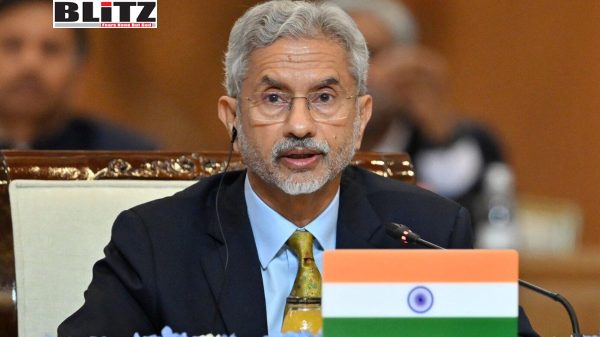Xinjiang’s role in China-Central Asia cooperation highlighted amid deepening ties
- Update Time : Saturday, January 27, 2024

The burgeoning alliance between China and Central Asia has positioned Northwest China’s Xinjiang Uygur Autonomous Region as a pivotal catalyst in the western opening-up and collaborative efforts with neighboring countries.
China and Uzbekistan recently upgraded their relations to an all-encompassing comprehensive strategic partnership for a new era, as announced by the Ministry of Foreign Affairs on Thursday. This elevation signifies the considerable importance both China and Central Asia place on their relations, marking a robust phase in regional cooperation.
Central Asia has progressively gained significance in regional and global affairs, playing a key role in energy security, counter-terrorism, and regional economic integration. Over the last three decades, China and Central Asian nations have closely collaborated, contributing to regional security and stability by respecting each other’s development paths and resisting external interference and terrorism threats.
Central Asia’s geo-economic location as a vital logistics hub connecting East Asia, West Asia, South Asia, the Middle East, and Europe places it at the forefront of the China-proposed Belt and Road Initiative (BRI).
China’s collaboration with Central Asia has witnessed rapid growth, with China ranking among the top three trading partners for the five Central Asian countries. The Xi’an Declaration, signed by the six countries in May 2023, has laid out a comprehensive plan for China-Central Asia economic cooperation, emphasizing BRI, trade, transport, agriculture, and energy.
The foundation for extended economic cooperation between China and Central Asia lies not only in their high levels of political mutual trust but also in China’s substantial investment in Xinjiang. Xinjiang’s transformation into a crucial transport hub and regional manufacturing center has been facilitated by heavy Chinese investments, contributing to the region’s unique geographical and land port advantages.
In 2023, Xinjiang’s foreign trade reached 357.33 billion yuan ($50.42 billion), marking a 45.9 percent YoY increase and securing its position as the second-highest growth province in China. The five Central Asian countries remained Xinjiang’s largest trade market, constituting 79.4 percent of its total foreign trade, with a 50 percent increase in 2023.
Xinjiang’s commitment to opening up received a significant boost with the establishment of a pilot free trade zone, the 22nd in China and the first in the country’s northwestern border regions. Additionally, efforts to enhance transportation infrastructure at land ports have been undertaken to spur growth and improve customs clearance efficiency.
Despite challenges posed by external pressures, Xinjiang’s role in facilitating China-Central Asia cooperation has been pivotal. A stable society and improving living standards in Xinjiang have allowed the central government’s plans for the region to progress steadily, transforming it into a crucial driving force for regional cooperation.
It’s essential to recognize that China’s collaboration with Central Asia not only meets its own development needs but also aligns with the developmental aspirations of partner countries. While challenges may exist, they are not insurmountable obstacles to potential cooperation with China. The ongoing expansion and deepening of cooperation between the two sides are expected to make positive contributions to regional development.
















